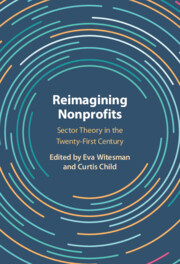1 - An Invitation to Rethink the Nonprofit Sector
Published online by Cambridge University Press: 11 January 2024
Summary
This introductory chapter makes a case for the value of considering the role and purpose of nonprofits in society. It defines “theory” in accessible terms and describes the scope of nonprofit-sector theory. It also previews the subsequent chapters.
Keywords
- Type
- Chapter
- Information
- Reimagining NonprofitsSector Theory in the Twenty-First Century, pp. 1 - 14Publisher: Cambridge University PressPrint publication year: 2024



